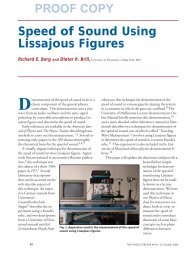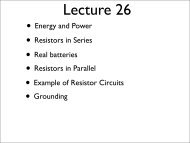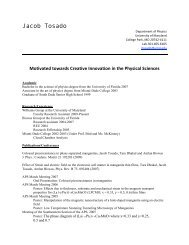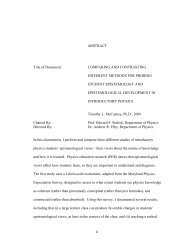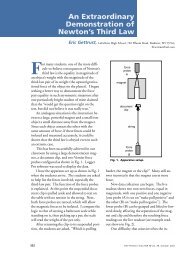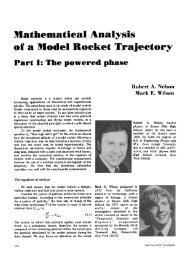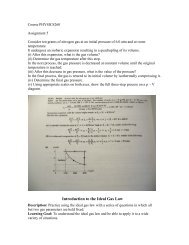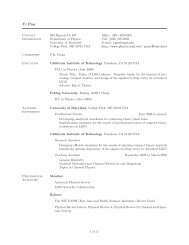Good Vibes: Introduction to Oscillations
Good Vibes: Introduction to Oscillations
Good Vibes: Introduction to Oscillations
Create successful ePaper yourself
Turn your PDF publications into a flip-book with our unique Google optimized e-Paper software.
Express your answer in meters.<br />
ANSWER: =<br />
3 times of the amplitude.<br />
Energy of a Spring<br />
Description: Short quantitative problem relating the <strong>to</strong>tal, potential, and kinetic<br />
energies of a mass that is attached <strong>to</strong> a spring and undergoing simple harmonic motion.<br />
This problem is based on Young/Geller Quantitative Analysis 11.1<br />
An object of mass attached <strong>to</strong> a spring of force constant oscillates with simple<br />
harmonic motion. The maximum displacement from equilibrium is and the <strong>to</strong>tal<br />
mechanical energy of the system is .<br />
Part A<br />
What is the system's potential energy when its kinetic energy is equal <strong>to</strong> ?<br />
Hint A.1 How <strong>to</strong> approach the problem<br />
Since the sum of kinetic and potential energies of the system is equal <strong>to</strong> the system's<br />
<strong>to</strong>tal energy, if you know the fraction of <strong>to</strong>tal energy corresponding <strong>to</strong> kinetic<br />
energy you can calculate how much energy is potential energy. Moreover, using<br />
conservation of energy you can calculate the system's <strong>to</strong>tal energy in terms of the<br />
given quantities and . At this point you simply need <strong>to</strong> combine those results <strong>to</strong><br />
find the potential energy of the system in terms of and .<br />
Part A.2<br />
Find the fraction of <strong>to</strong>tal energy that is potential energy<br />
When the kinetic energy of the system is equal <strong>to</strong> , what fraction of the <strong>to</strong>tal<br />
energy is potential energy?<br />
Hint A.2.a Conservation of mechanical energy<br />
In a system where no forces other than gravitational and elastic forces do work, the<br />
sum of kinetic energy and potential energy is conserved. That is, the <strong>to</strong>tal<br />
energy of the system, given by , is constant.<br />
Express your answer numerically.<br />
ANSWER:<br />
Part A.3<br />
Find the <strong>to</strong>tal energy of the system<br />
What is the <strong>to</strong>tal mechanical energy of the system, ?<br />
Hint A.3.a How <strong>to</strong> approach the problem




